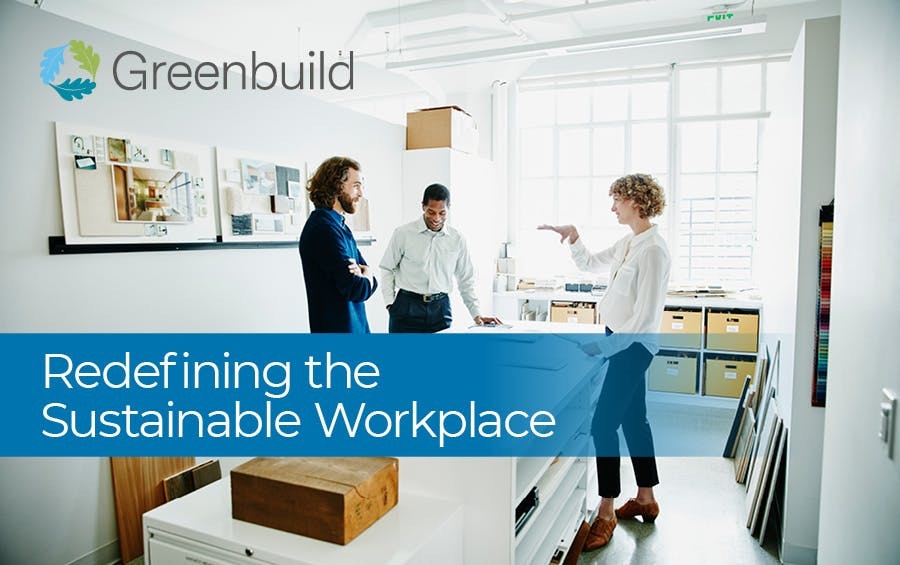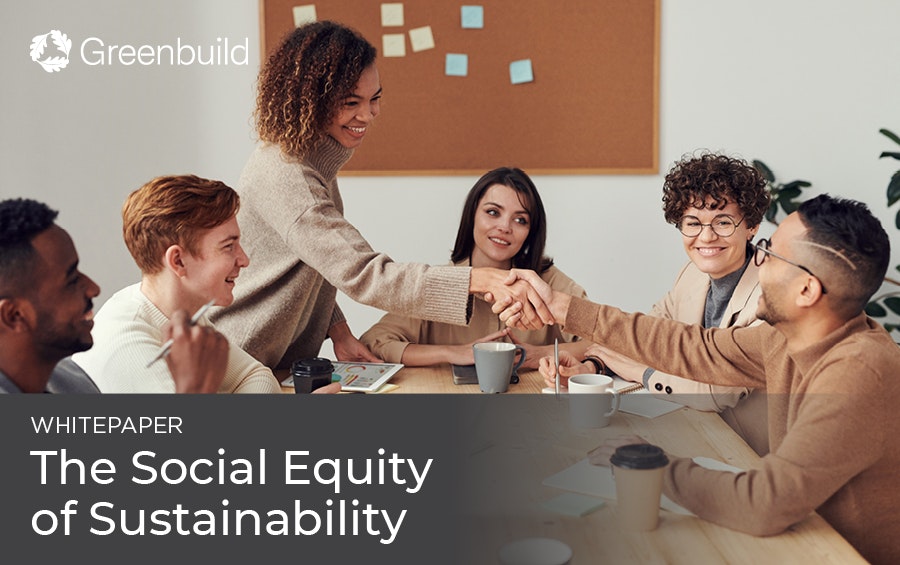Cutting-Edge Reports For You
With thousands of readers, the Greenbuild white paper reports offer insights into the must-know trends, resources and changes our industry is facing.
See the below white papers focused on green spaces and green industry details you need to know.
New Whitepaper
Across the United States, buildings that are designed, constructed and operated to meet high standards for energy efficiency, environmental sustainability, occupant health and overall resilience command increased rental premiums and achieve higher occupancy levels than their conventional counterparts.
This whitepaper will cover:
- How energy efficiency reduces the operating cost
- Data on how resilient buildings outlast standard buildings
- Tools and resources for measuring/benchmarking high performance portfolios
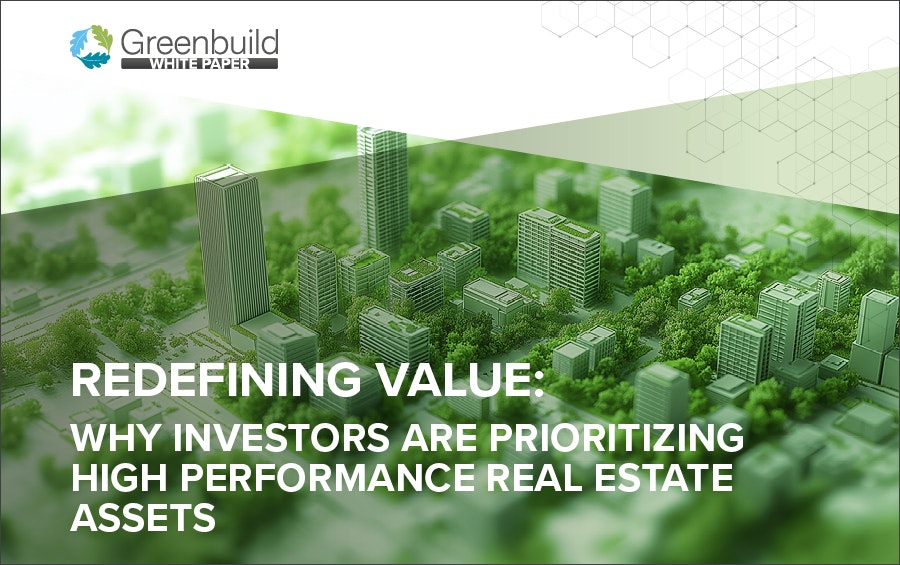
Get to Know LEED v5
The upcoming release of LEED v5 signals the next evolution of the standard, which is centered around three goals: decarbonization, enhancing quality of life, and ecological conservation.
This report will cover:
- Key themes from LEED v5 sessions, workshops, and keynotes at Greenbuild
- How different LEED v5 is from the previous version
- What to know about LEED v5 as it pertains to certifying your projects
- Expert insights from Greenbuild speakers.
Complete the following form to download the report.


Inside the Fifth National Climate Assessment
There are a number of key themes from the assessment as a whole that help set the stage for where the U.S. currently stands on climate change and how it relates to the built environment. This whitepaper will cover topics including:
- The Fifth National Climate Assessment’s report on “Built Environment, Urban Systems, and Cities.”
- How urban areas are drivers of climate change and represent an opportunity for adaption and mitigation.
- Key attributes of the built environment that exacerbate climate impacts.
- Equitable outcomes from a community-led approach to climate change.
O&M Meets ESG: Optimizing Your Buildings for Impact
Over a quarter of global investors say that ESG is central to their investment thesis: ESG-focused institutional investment is expected to reach $33.9 trillion by 2026.
Building operations, due to their resource intensity and connection to human health, have long represented an avenue for realizing all three of the components of ESG.
In our whitepaper, O&M Meets ESG: Optimizing Your Buildings for Impact, we address how building operations and maintenance supports ESG initiatives, strategies for engaging key stakeholders for success, incentives, funding options, and more.
Download the full whitepaper to learn more.
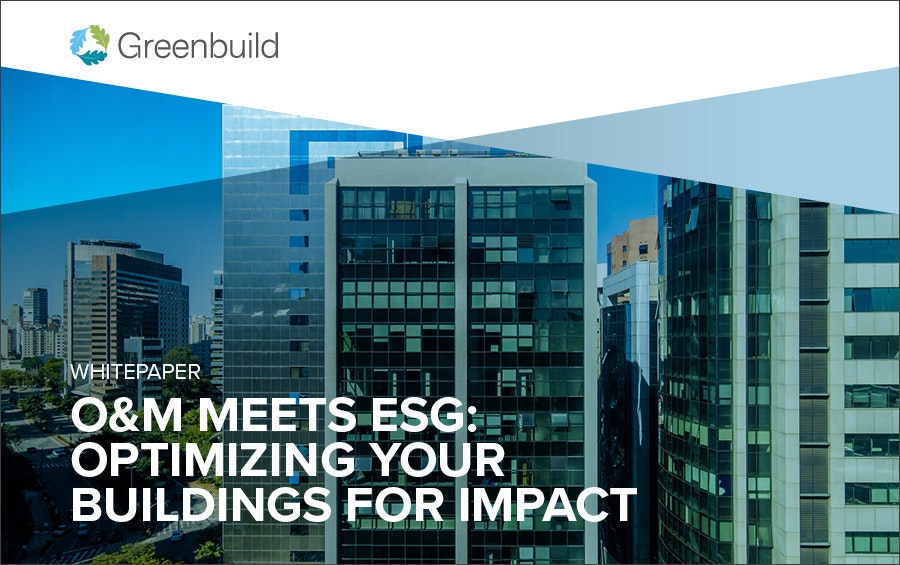

The Future of Healthier and More Sustainable Buildings
The need for healthier and more sustainable buildings has been a consistent demand from health experts, building industry organizations and governments in recent years.
Building owners and facility managers in both the public and private sectors, ranging from commercial real estate groups, to schools and healthcare organizations, are currently working to answer a critical question: "How do we address building health in a more sustainable way?"
View the Technical Reference Guide, sponsored by Honeywell below to learn more.
Electrification in Existing Buildings: A Sustainability Imperative
An essential approach to reducing the emissions that result from powering our global existing buildings is electrification, the process of transitioning to building technologies that operate with electricity instead of fossil fuels, thus reducing reliance on oil, gas and coal.
This whitepaper will cover topics including:
- How heat pumps can be incorporated into existing structures
- Supporting technologies, including for water heaters and electric appliances
- Strategies to maximize renewable energy sources
- Incentives and other funding options, and more
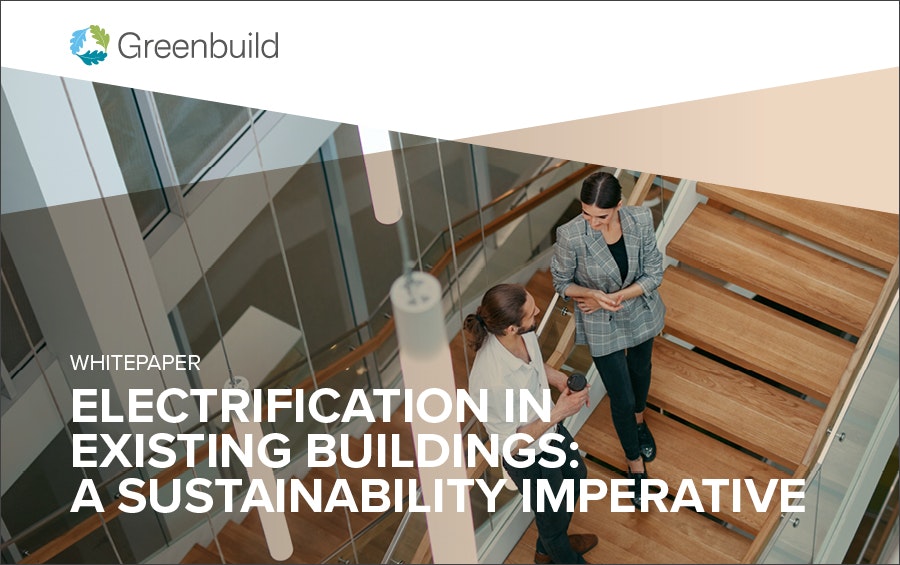
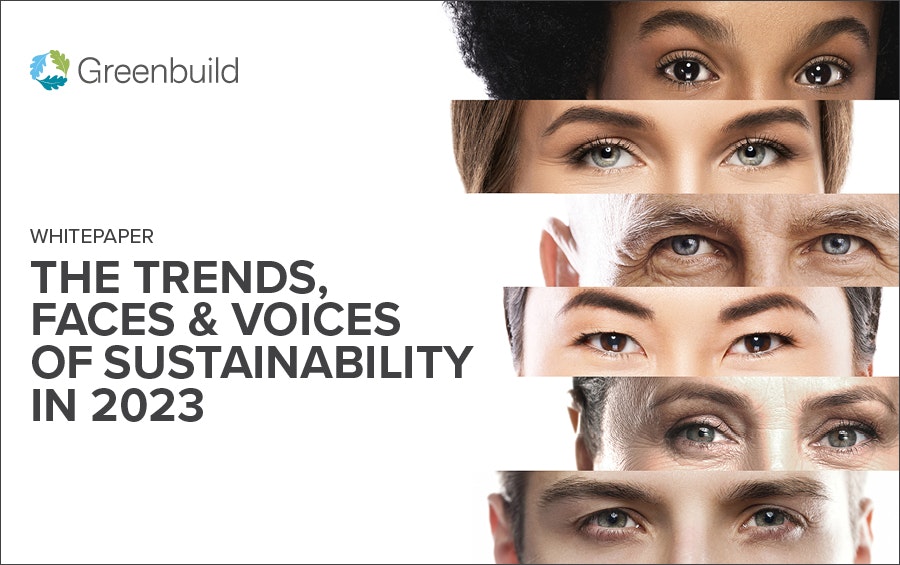
The Trends, Faces & Voices of Sustainability in 2023
Last year, thousands of industry professionals traveled (sustainably) from throughout the world to collaborate on building solutions and ideas around the built environment. Commemorating the 20th year of the Greenbuild International Conference and Expo, these thought leaders shared innovations and perspectives. Download our new whitepaper The Trends, Faces & Voices of Sustainability in 2023 to learn more about key trends that emerged from last year's event.
Buildings Need to Evolve to Cope with Climate Change
Climate change is one of the leading environmental, social and financial challenges of the 21st century. Many businesses, particularly those who own and operate buildings, are working to reduce their carbon emissions.
In this whitepaper sponsored by Honeywell, we cover:
- How businesses can work to become carbon neutral
- Decarbonization as a nation and at the international level
- U.S funding opportunities to support carbon reduction
- The benefits of carbon neutral buildings
- Solutions to help business owners looking to reduce their carbon footprint
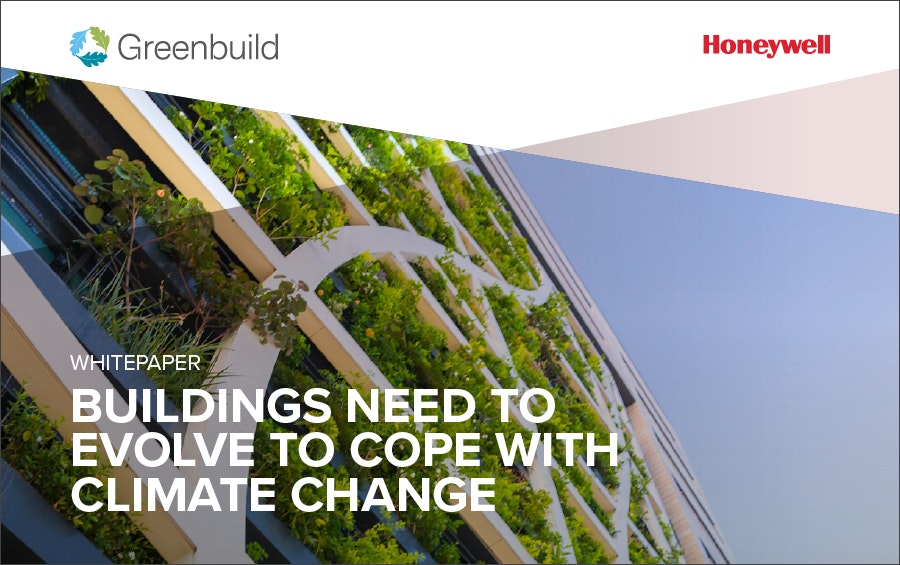
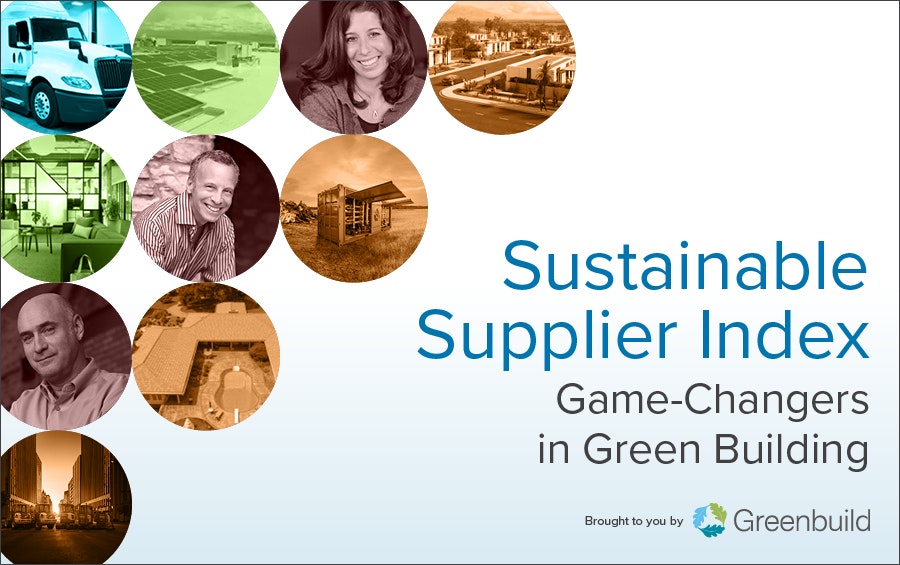
Sustainable Supplier Index
Many businesses and service providers are developing creative ways to facilitate and fund green building and (most importantly) to report on the impact of decisions.
This report will take you through every stage of the planning, development, building, and measurement process so you can get a glimpse into some of the innovative initiatives that companies are launching.
Complete the following form to download.
How Construction Projects Can Achieve Zero Waste and Net-Zero Goals While Saving Resources
Businesses must start changing their practices now to embrace sustainability and environmental considerations. This behavioral shift also includes adopting net-zero goals in addition to zero waste practices for construction and demolition (C&D) materials. In particular, the construction industry has a very large carbon footprint and consumes a lot of resources. Fortunately, some key companies have developed innovative sustainability methods to handle this type of problem. Read this whitepaper to learn how those in the construction industry can change their thinking around carbon footprints, and reduce and recycle construction materials more effectively.

The Sustainable Multifamily Housing Opportunity
As Runberg Architecture Group, Ecotope, and Vulcan Real Estate collaborated on three successive multifamily projects in Seattle, they developed and refined an “off-the-shelf,” highly-replicable approach to creating high-performing multifamily buildings using existing energy-saving technology.
Learn why this approach has value-add for developers, creates healthier buildings for tenants, and is environmentally-friendly with low energy and water usage rates that are future-proof for code cycle changes.
Click to view Runberg's sponsored whitepaper for more insights.
Building a More Resilient America
Solutions to today’s sustainability issues must involve a collaborative worldwide community. We must build a country that will stand the test of time and lead the rest of the planet in making fundamental changes.
In this whitepaper, we define:
- How experts in the Greenbuild community on their take on the interconnection between sustainability and resiliency
- The difference between sustainability and resiliency
- How the U.S. government factors into sustainable development
- Challenges the U.S. faces in reaching a more resilient country


The New Federal Sustainability Executive Order Explained
Greenbuild hosted an in-depth webinar featuring Andrew Mayock, Federal Chief Sustainability Officer for President Biden, during which he discussed the new Federal Sustainability Executive Order.
In this whitepaper, we define:
- The first steps Mayock's office is taking to implement these aggressive goals
- Mayock's plan on how the U.S will reach net-zero emissions by 2050
- Enablement of the path to achieving his sustainability goals for net-zero buildings, carbon-free electricity, zero-emissions vehicles, supply chain strategy, and more
- The implications this has on your plans to make your community more resilient

The Business Case for Sustainable Spaces
In a period of rapid growth in the green space industry, we reached out to a diverse panel of industry experts and asked how their colleagues and the companies they serve can move more quickly to operate more sustainably.
In our white paper, The Business Case for Sustainable Spaces, we address how today's leaders compellingly present the facts for senior leadership to make critical sustainability changes to address climate change. Download the full white paper for an inside look at how to expand your company into a greener, more climate-focused space.
Rebuilding a More Sustainable World
In President Biden's first 100 days in office, he received the highest rating for his ambitious goals set around environmentalism.
In our whitepaper, Rebuilding a More Sustainable World , we address how the new administration is shaping a more sustainable future. We reached out to 19 environmental change-makers in the green building sector and provided a forum for their voices, views, and work to be shared and leveraged.
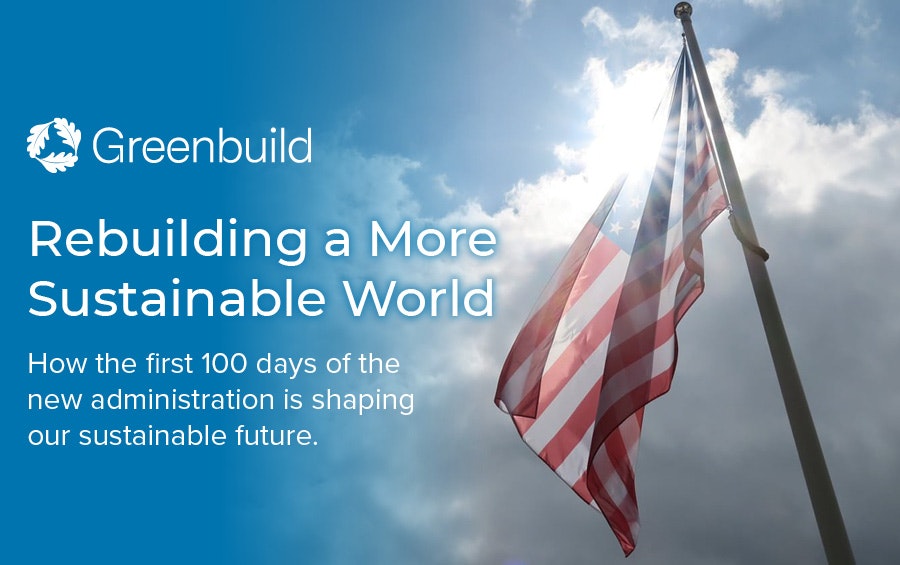
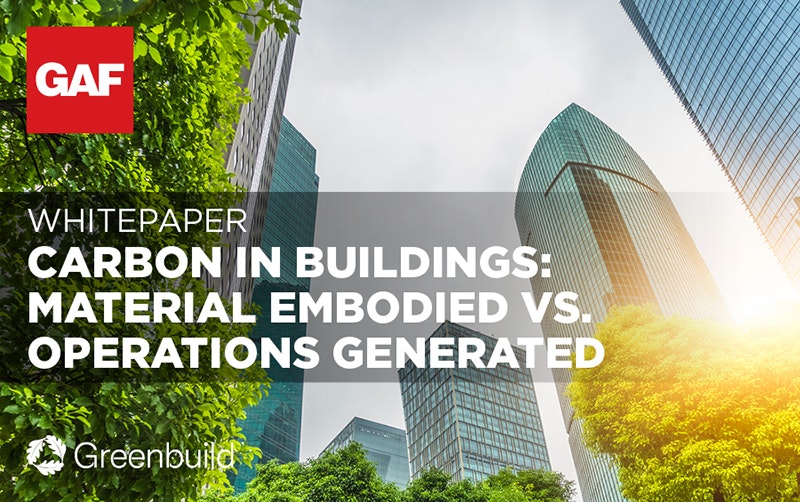
Carbon in Buildings: Material Embodied vs. Operations Generated
When it comes to reaching ambitious goals for building sustainability and resilience, our industry’s focus often centers on improvements related to embodied carbon – how we minimize emissions in the manufacturing, production, and transport of the materials used in a building. However, over the long service life of a building, there are also significant opportunities to reduce operational carbon by increasing energy efficiency in ways that are commonly overlooked during the initial building phase.
Click to view GAF's sponsored whitepaper for more insights.
Sustainability: Yesterday Versus Tomorrow
The industry’s top green building and sustainability leaders identify the 7 must-know insights defining the future of our industry. This “green dream team” represents a broad and diverse cross-section of sustainability and business leaders, including architecture, manufacturing, design, consulting and real estate. They spoke about the post-COVID-19 transformation, how innovation will need powerful new solutions and how companies and brands are expanding their knowledge and commitment to social responsibility.

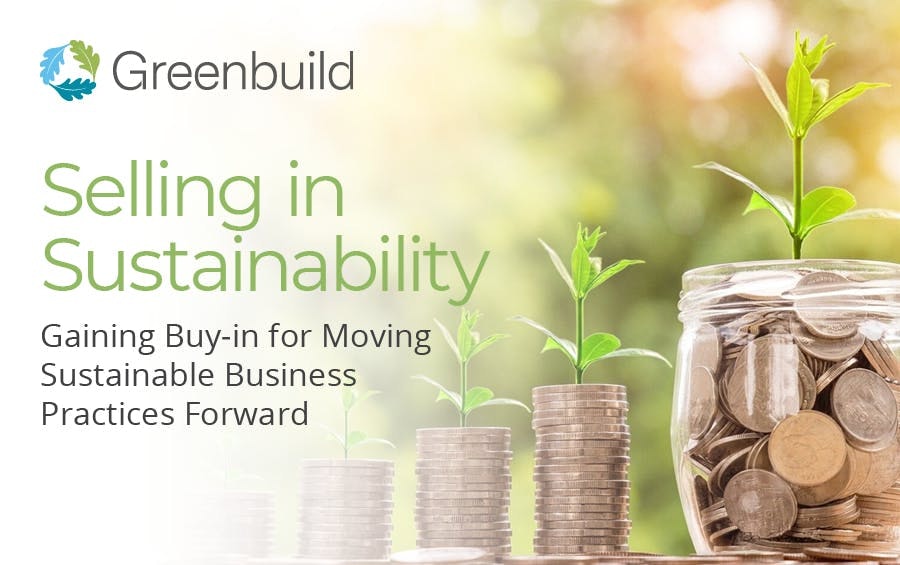
Selling In Sustainability
Even the most highly skilled salespeople and business leaders meet objections. The formula for gaining buy-in for sustainable building is a complex combination of human psychology, credible storytelling, and compelling financial data. In this white paper, experts decide the steps you can take to convince decision-makers of these necessary investments.
Redefining the Sustainable Workplace
Business leaders are more focused than ever before on employee health and well-being, especially as they create a new balance between physical space and remote working.
